Centaurea melitensis, Maltese Star-thistle
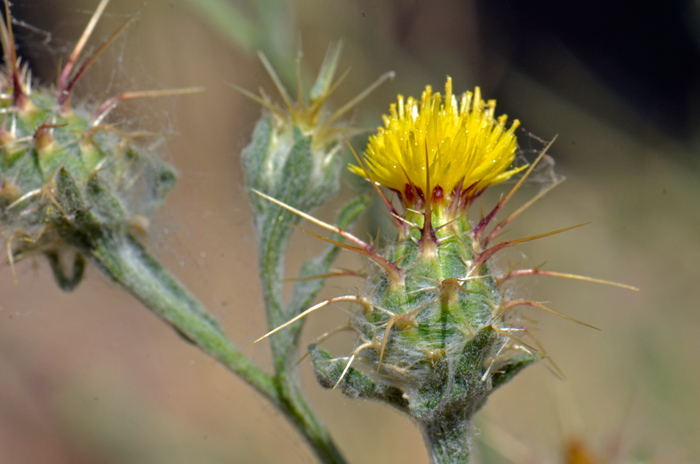
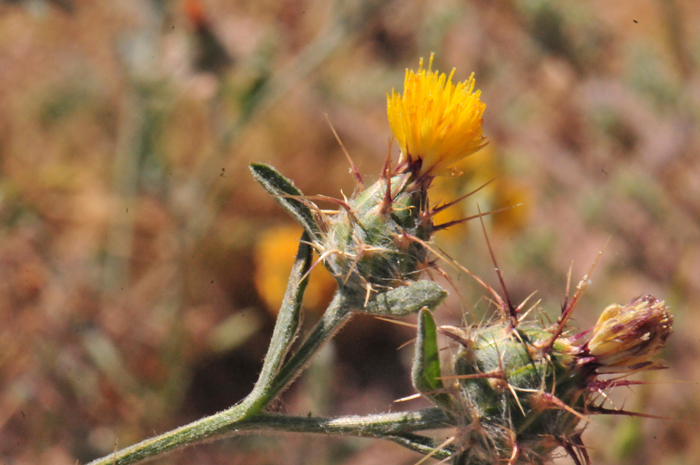
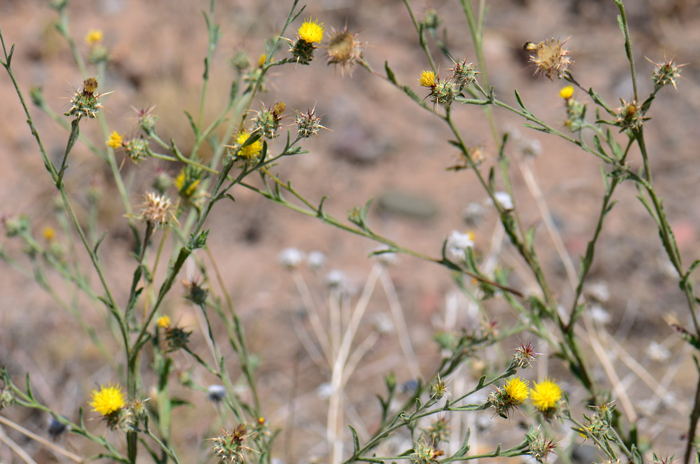
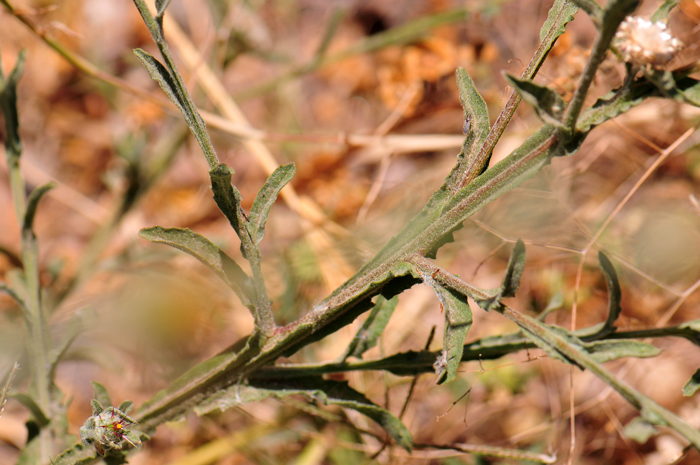
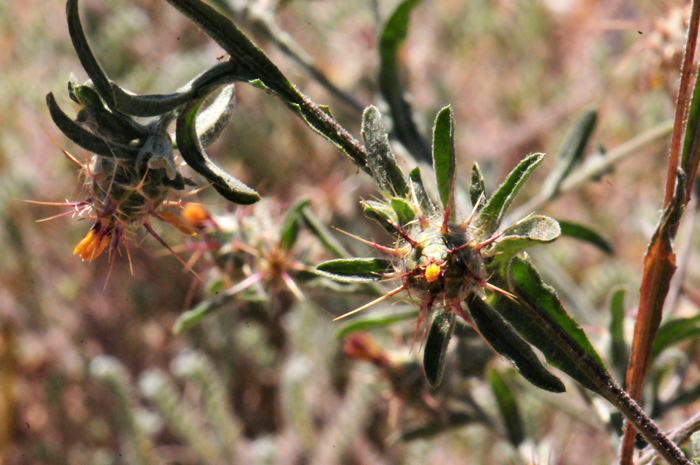
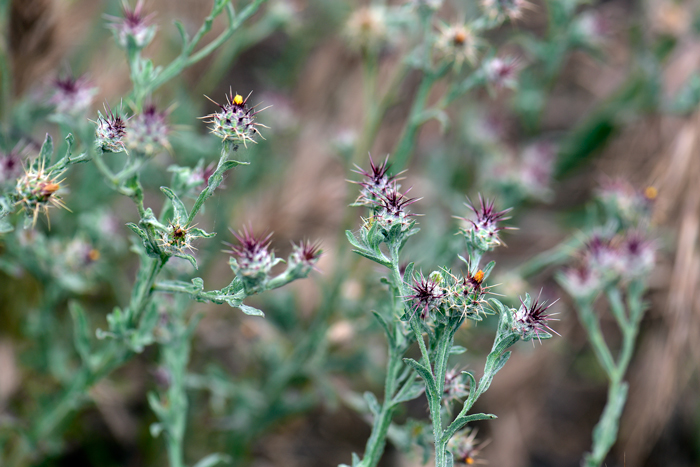
Scientific Name: Centaurea melitensis
Common Name: Maltese Star-thistle
Also called: Malta Thistle, Maltese Star Thistle, Malta Starthistle, Napa Thistle, Spotted Knapweed, Tocalote, Tocolote (Spanish: Cardo)
Family: Asteraceae, Sunflower Family
Synonyms: ( )
Status: Introduced and naturalized, European.
Duration: Annual or biennial.
Size: 3 feet (100 cm) more or less.
Growth Form: Forb/herb; large plants gray-hairy, covered in dense, soft and sometimes woolly hairs (tomentose); generally 1 stem, openly branched, stems winged and upright more or less (erect), tiny resin-gland-dotted.
Leaves: Green, grayish green; leaves arranged alternately along stem; fine hairs, thinly tomentose; leaf blades linear to oblong; leaf edges or margins smooth and not divided (entire) or toothed (dentate) or pinnately lobed; leaves resin (resinous) dotted.
Flower Color: Yellow; 1 to few disk flowers, flower heads singles or generally in open leafy corymbiform arrays; flowers slender, appear cobwebby or becoming smooth (glabrous); bracts or phyllaries surrounding the flower heads are straw-colored, the lower appendages purplish, these phyllaries are spine-tipped, the slender central spine is the largest; fruit a dull white or light brown cypsela with a pappus of white stiff bristles.
Flowering Season: April or May to July.
Elevation: Up to 5,000 feet (1,500 m) more or less.
Habitat Preferences: Various habitats, lower and upper deserts, pine-oak woodlands, pinyon-juniper communities, chaparral and grasslands; disturbed areas, roadsides, fields and agriculture areas.
Recorded Range: Primarily a western invasive species in North America including British Columbia, spreading now east of the Mississippi River extending currently to Massachusetts. Widely introduced. In central, south northwest and northeast Arizona.
North America & US County Distribution Map for Centaurea melitensis.
North America species range map for Centaurea melitensis:
North American range map courtesy of Virginia Tech, Dept. of Forest Resources & Environmental Conservation
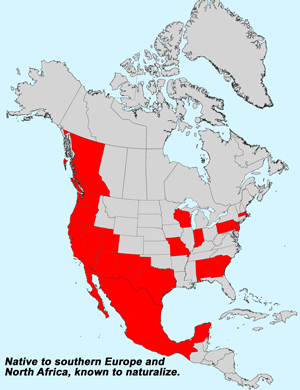
U.S. Weed Information: Centaurea melitensis can be weedy or invasive as noted by the USDA, Natural Resources Conservation Service. It is considered a weed by the following;
Plants included here may become weedy or invasive.
Invasive/Noxious Weed Information: Centaurea melitensis is listed by the USDA, Natural Resources Conservation Service as a Noxious Weed in:
Plants included here are invasive or noxious.
Wetland Indicator: Unknown
Threatened/Endangered Information: Unknown
Genus Information: In North America there are 34 species and 38 accepted taxa overall for Centaurea. Worldwide, The Plant List includes 734 accepted species names and a further 1,150 scientific names of infraspecific rank for the genus Centaurea.
Members of the genus Centaurea are commonly known as Knapweeds.
The genus Centaurea was published by Carl Linnaeus in 1753.
In the Southwestern United States: Arizona has 8 species of Centaurea, California has 17 species, New Mexico has 8species, Nevada has 6 species, Texas has 4 species, Utah has 10 species. All data is approximate and subject to taxonomic changes.
Comments: Maltese Star-thistle is an aggressive weed which was introduced to North America (California) in the 18th century. It is a native of the Mediterranean region of Europe and Africa. It continues to spread across North America and it is listed as a noxious weed in many states. The numerous common names of a plant is often a clue as to its economic significant or importance across its range, either positive or notoriously; such is the case for the Maltese Star-thistle.
Also see in Southwest Desert Flora; Yellow Star-thistle, Centaurea solstitialis.
The genus Centaurea was published by Carl Linnaeus in 1753.
The species epithet melitensis (meliten'sis:) is from the Latin word "Melita" an adjective of Malta a reference to the the Mediterranean region of Europe and Africa where it is native.
See complete listing of ethno-botanical uses at Native American Ethnobotany, University of Michigan, Dearborn.

